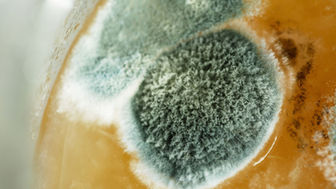
Evaluating Every Corner for Your Peace of Mind
7 days a week 10:00 am-5:00 pm

ABOUT OUR MOLD INSPECTION


Our mold inspection services encompass a thorough assessment of mold presence in your residence. Seasoned inspectors employ advanced testing tools to ascertain mold type and extent, subsequently furnishing a comprehensive report of their findings. The inspection encompasses a visual scrutiny of both interior and exterior areas, alongside an intricate analysis of air quality.
Should mold be detected, our specialists offer recommendations for remediation and removal, guaranteeing your home is devoid of any health hazards linked to mold exposure. Our mold inspection services prioritize your peace of mind, aiming to safeguard you and your family from potential mold-related effects.

.png)
COMPLETE MOLD INSPECTION
The Inspector's Tasks:
- Conducting a non-invasive visual assessment of accessible, visible, and installed building systems and components (as outlined in Section 4.0 Standards of Practice).
- Collecting moisture, temperature, and humidity measurements (see Section 4.8 Moisture, Humidity, and Temperature).
- Obtaining mold samples in accordance with IAC2 Mold Sampling Procedures (see Section 5.0 IAC2 Mold Sampling Procedures).
The Inspector's Reporting:
- Identifying moisture infiltration.
- Documenting water-related damage.
- Noting the presence of musty odors.
- Reporting any observable mold growth.
- Highlighting conditions favorable for mold development.
- Detailing outcomes of laboratory analyses for all mold samples taken from the building.
- Communicating any un-inspected systems or components listed in Section 4.0 Standards of Practice, along with the reasons for their omission.
STANDARDS OF PRACTICE
The Indoor Air Quality Association (IAQA) established the Indoor Air Quality Certified® (IAQ-C) program, which encompasses the IAC2 certification for mold inspections. The IAC2 Standard of Practice (SOP) furnishes mold inspectors with directives to adhere to during their inspections.
Here's a rundown of the key aspects:
- The inspector is tasked with identifying and reporting visible mold or conditions conducive to mold growth.
- Inspection covers both the interior and exterior of the property, encompassing the roof, accessible crawl spaces, basements, and attics.
- Moisture meters and other tools are utilized to pinpoint moisture intrusion, water damage, or elevated humidity.
- When necessary, the inspector collects mold samples for subsequent laboratory analysis.
- A comprehensive written report is furnished, detailing findings, conclusions, and recommended remediation actions.
- The inspector refrains from offering or conducting mold remediation services.
- Adherence to relevant laws and regulations concerning mold inspections is obligatory.
In addition, the IAC2 Mold Inspection SOP requires the inspector to possess knowledge in microbiology, building science, and environmental health. A basic grasp of mold remediation principles and the ability to recommend suitable remediation procedures are also prerequisites.
It's essential to recognize that while the IAC2 Mold Inspection SOP is instructive, it doesn't encompass the entirety of mold inspection and remediation guidance. Homeowners and property managers should seek guidance from certified mold inspectors and licensed mold remediation professionals if they suspect mold growth on their property.







